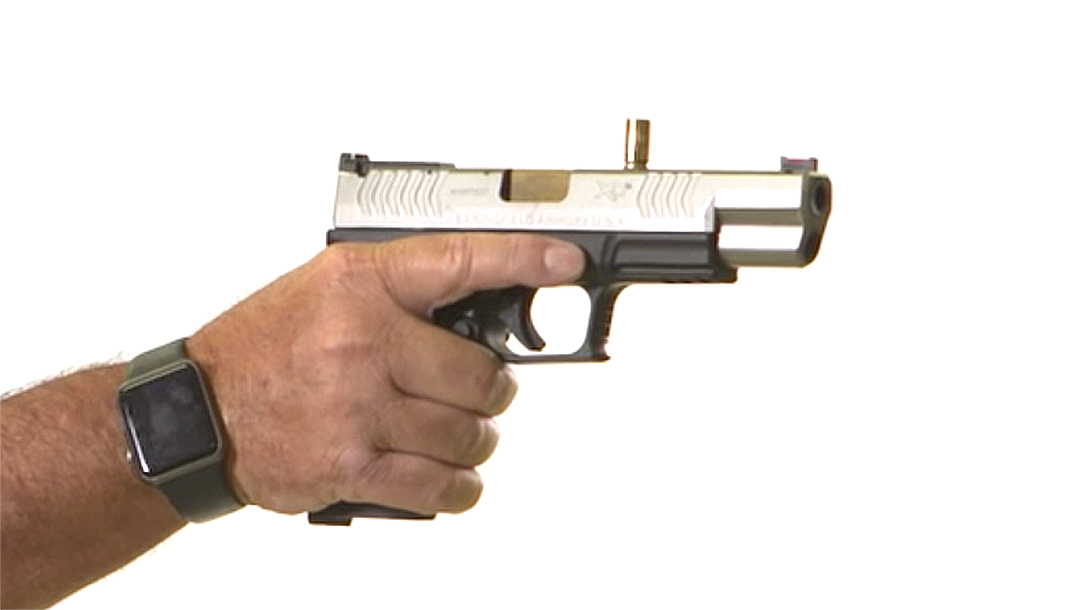While most prefer to train at the range, dry firing should actually be implemented into all training regimens. It may not be as much fun, but conducting a balance drill or wall drill can truly help accuracy and trigger control. And the best part is that it doesn’t cost anything.
Many might not realize it, but all experts both recommend and conduct dry firing, regularly. Dry firing is, in fact, one of the easiest ways to train, as it can be done anywhere. It is also a good way to get to know a handgun and improve one of the biggest factors of accuracy — trigger control. Sure, sight alignment is important, but if you pull the sights off with the trigger pull, accuracy is going to suffer. So, those who really want to learn trigger control to improve accuracy, should regularly conduct these dry fire drills.
Advertisement — Continue Reading Below
The Wall
The wall is probably the simplest of all drills. It was designed by George Harris, formerly of Sig Sauer Academy, and consists of an unloaded gun and a blank wall, most recommend a lighter colored wall. This drill doesn’t work on speed or even target acquisition, it only covers trigger control.
To conduct this drill, bring the unloaded gun up and align the sights with the muzzle only an inch or two from the wall. Then, while focusing on the front sight through the rear sights, squeeze the trigger. The gun should click without the sights moving, which is much harder than most believe. This drill should be conducted regularly to keep trigger control under control.
The Balance Drill
After getting a handle on trigger control, one of the best ways to test the ability is with a balance drill. Also known as the penny or coin drill, this one consists of placing a coin or cartridge case on the slide somewhere behind the front sight. Then, simply aim and pull the trigger. If the item stays in place, you conducted the drill properly. If it falls, try again.
Advertisement — Continue Reading Below
Now the whole point of these drills is to refine grip and pull into proper trigger control, which improves accuracy. In fact, trigger control is one of the most important factors of accuracy, if not the most important. It doesn’t do much good to get a gun quickly into action and have the shots go astray.
























